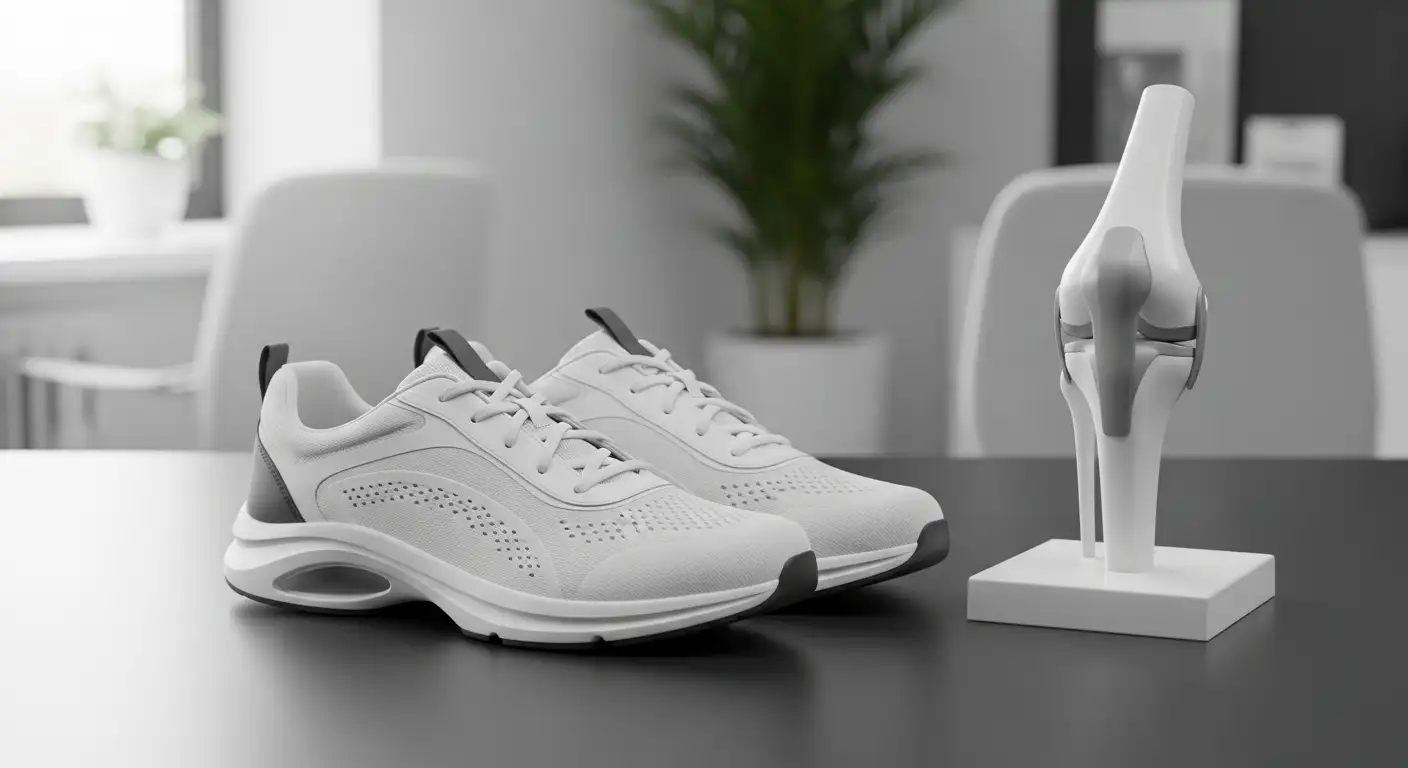Understanding Knee Pain
Knee pain is a common ailment that affects many individuals, influencing their ability to perform daily activities effectively. Understanding where this pain originates and the impact it can have is essential for effective management and treatment.

Source and Impact of Knee Pain
Knee pain often stems from various sources, including injuries, overuse, or underlying conditions such as arthritis. These pain sources can lead to significant limitations in mobility, making it difficult for individuals to participate in physical activities or even perform routine tasks.
Table 1 provides an overview of potential sources of knee pain and their impact:
Source of Knee PainImpactInjury (e.g., sprains, tears)Limited mobility, pain during movementOveruse (e.g., repetitive activities)Gradual pain, swelling, stiffnessArthritisChronic pain, decreased range of motion
The relationship between knee pain and physical activity is particularly important, as severe pain can discourage individuals from remaining active, potentially leading to further health complications.
Common Causes of Knee Pain
Several common causes contribute to knee pain, and recognizing these can aid in prevention and treatment. Among the most frequent culprits are:
Table 2 lists some of the common causes of knee pain:
Common CauseDescriptionLigament InjuriesTears or strains caused by sudden stops or changes in directionArthritisDegeneration of joint cartilage leading to chronic painTendonitisInflammation of tendons due to overuse or injuryBursitisInflammation of the bursa leading to swelling and pain
Understanding these causes is vital for implementing effective stretch techniques, such as the biceps femoris stretch, to enhance flexibility and mitigate discomfort surrounding the knee joint.
Importance of Stretching
Proper stretching techniques are essential for maintaining a healthy body and preventing injuries, especially for individuals experiencing knee pain. The importance of stretching for the biceps femoris cannot be overstated, as it plays a crucial role in overall knee health.
Benefits of Stretching
Stretching offers numerous advantages for individuals, particularly those dealing with knee pain. Here are some key benefits:
Types of Stretching Techniques
There are various stretching techniques individuals can utilize, each catering to different needs and goals. Below are some common types of stretching:
Stretching TechniqueDescriptionStatic StretchingInvolves holding a stretch in a fixed position for a set amount of time (usually 15-60 seconds). This method is effective for improving overall flexibility.Dynamic StretchingInvolves controlled movements that enhance range of motion and prepare muscles for activity. This can include leg swings or arm circles.Proprioceptive Neuromuscular Facilitation (PNF)Combines stretching with contraction for greater effectiveness. A partner may assist with this technique to achieve deeper stretching.Ballistic StretchingInvolves bouncing or jerking movements to stretch the muscles. This technique is generally not recommended for beginners due to the risk of injury.
Focusing on lower extremities, such as the calves, hamstrings, hip flexors, and quadriceps, is especially important, ideally performing these stretches daily or at least three to four times per week. For thorough guidance on specific stretches, including hamstring stretches for seniors and knee exercises for seniors, exploring dedicated resources can be beneficial.
Incorporating proper stretching into a routine is vital for overall knee health and enhancing the effectiveness of exercises targeting the biceps femoris, which can be further supported through techniques like the prone quad stretch and gastrocnemius stretch.
Focus on Biceps Femoris
Understanding the biceps femoris is crucial for knee health and preventing injuries. The biceps femoris is one of the two muscles that make up the hamstring group, playing a significant role in knee movement and stability.
Anatomy of the Biceps Femoris
The biceps femoris has two distinct heads: the long head and the short head. The long head originates from the ischial tuberosity of the pelvis, while the short head starts at the femur. Both heads insert at the head of the fibula, on the outside of the knee.
Here’s a brief overview of its anatomy:
ComponentDetailsLong Head OriginIschial tuberosityShort Head OriginFemurInsertionHead of fibulaFunctionKnee flexion, hip extension
Stretching the biceps femoris can enhance flexibility and support knee function. To effectively target this muscle during stretching, it's crucial to perform the stretches with certain techniques.
Stretching Techniques for Biceps Femoris
A variety of techniques can be employed to stretch the biceps femoris effectively. Here are several recommended methods:
These biceps femoris stretches can help improve flexibility, increase range of motion, and contribute to knee health. Regularly incorporating these stretches into a fitness routine is beneficial for maintaining knee function and preventing discomfort.
Biceps Femoris Stretching Tips
The biceps femoris, part of the hamstring muscle group, requires specific attention when stretching to ensure proper form and alignment. Understanding how to execute stretches effectively can promote flexibility and overall knee health.
Proper Form and Alignment
When performing a biceps femoris stretch, maintaining proper form is key to minimizing the risk of injury. Below are essential tips for achieving the correct posture during stretches:
Here’s a simple illustration of proper stretching form:
Stretch TypeKnee PositionHip PositionBack AlignmentBiceps Femoris StretchFully ExtendedFlexed at least 45°Straight
Duration and Frequency of Stretches
To reap the full benefits of a biceps femoris stretch, it is important to consider both the duration and frequency of each session. Recommendations for effective stretching include:
Incorporating a regular stretching routine not only benefits the biceps femoris but also enhances overall flexibility and function in associated areas around the knee. To maintain balance and movement, a comprehensive approach including stretches for various muscle groups such as the calves, thighs, and lower back is recommended [4].
By paying attention to form, duration, and frequency, individuals can effectively perform the biceps femoris stretch, promoting better knee health and reducing the risk of injuries. For further techniques and guidance, consider exploring other knee exercises for seniors and effective hamstring stretches for seniors.
Preventing Knee Injuries
Preventing knee injuries is crucial for maintaining an active lifestyle and ensuring longevity in physical activities. Proper warm-up routines and stretching play significant roles in safeguarding the knees.
Importance of Pre-Exercise Warm-up
Warming up before exercise helps prepare the body for physical activity. Engaging in light activities such as walking, jogging, or biking at low intensity for 5 to 10 minutes increases blood flow to the muscles, making tissues more pliable [2]. When muscles are warm, they are less susceptible to strains and sprains, reducing the risk of injury. People often overlook this step, but it is essential for protecting the knees and other joints during workouts.
Warm-up ActivityDurationPurposeLight walking5 - 10 minutesIncreases blood flowLight jogging5 - 10 minutesWarms up musclesLow-intensity biking5 - 10 minutesEnhances flexibility
Role of Stretching in Injury Prevention
Stretching is vital for maintaining flexibility and joint mobility. It helps keep the muscles healthy and reduces the likelihood of injuries. While stretching alone does not prevent overuse injuries, it is beneficial for overall knee health [4]. Stretching the biceps femoris specifically can aid in maintaining the range of motion in the knee joint.
In addition, incorporating a proper stretching regimen can enhance performance and prevent strains. For instance, stretching exercises targeting the quadriceps have been shown to decrease the activation of the biceps femoris, thereby providing stability to the knee joint [1]. Regularly including stretches, such as the gastrocnemius stretch and prone quad stretch, can significantly bolster knee health.
Stretching BenefitsDescriptionMaintains flexibilityKeeps muscles and joints mobileAids in joint pain treatmentReduces muscle and joint discomfortEnhances athletic performanceSupports better movement and reduces stiffness
By focusing on warm-up routines and effective stretching techniques, individuals can significantly lower the risk of knee injuries. Both elements are integral parts of a comprehensive approach to knee health.
Additional Considerations
Stretching plays an essential role in maintaining overall knee health and managing conditions related to the biceps femoris and other muscles. Two key considerations include the range of motion and flexibility, as well as incorporating stretching into a daily routine.
Range of Motion and Flexibility
Range of motion refers to the extent of movement in a joint, while flexibility pertains to the ability of muscles to lengthen. Both are crucial for preventing knee pain and injury. Tight muscles can restrict movement, which may increase the risk of joint pain, strains, and injuries [2].
To enhance flexibility, individuals should focus on stretching their lower extremities, including calves, hamstrings, hip flexors, and quadriceps. It is suggested to perform stretches regularly, ideally daily or at least three to four times per week.
Muscle GroupRecommended Stretch FrequencyCalves3-4 times per weekHamstrings3-4 times per weekHip Flexors3-4 times per weekQuadriceps3-4 times per week
Increased flexibility can improve performance in physical activities and reduce the likelihood of injuries. For older adults, stretches like hamstring stretches for seniors can be particularly beneficial in maintaining mobility and knee health.
Incorporating Stretching Into Daily Routine
Effective stretching should be a part of a daily routine. Warming up with light activities for five to ten minutes, such as walking, can prepare muscles for stretching by increasing blood flow, making them pliable [2].
To ensure that stretching becomes a habit, individuals might consider the following tips:
Despite the benefits, stretching should not be viewed as a complete solution for preventing overuse injuries. Including targeted exercises like the step down exercise can complement stretching for more effective knee health management.
Gradually incorporating these techniques will not only improve flexibility and range of motion but also foster a consistent approach to knee health, helping to alleviate pain associated with the biceps femoris and other related muscles.
References
[2]:
[3]:
[4]:





